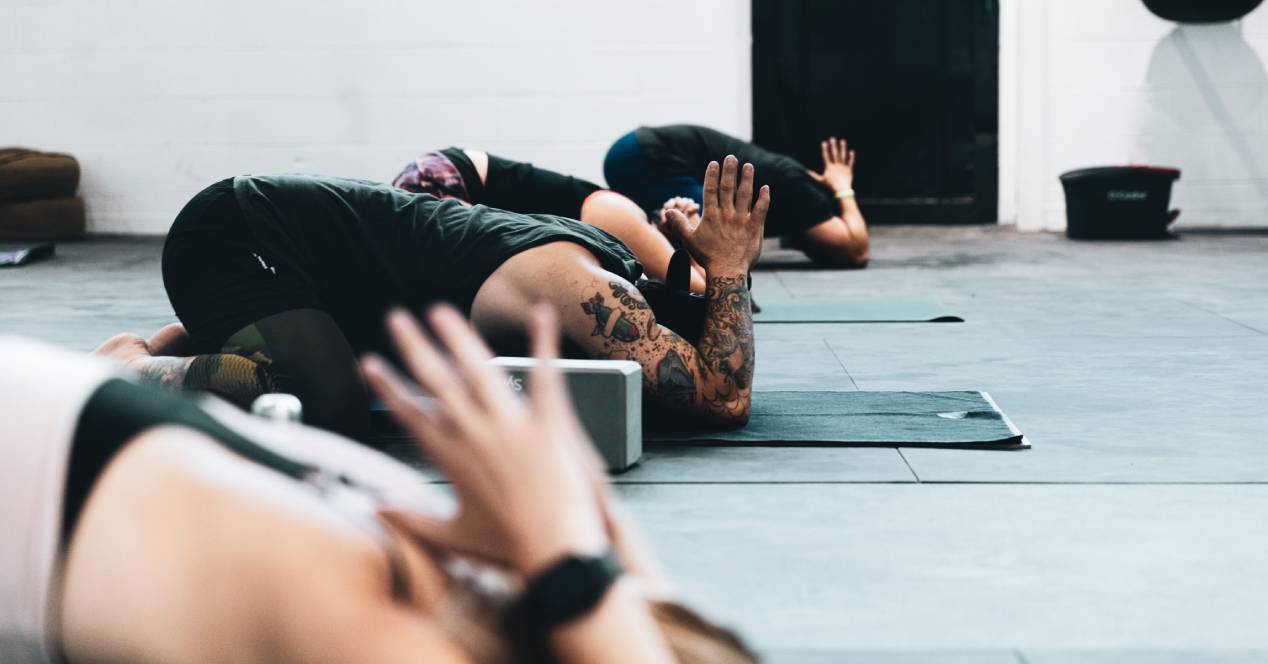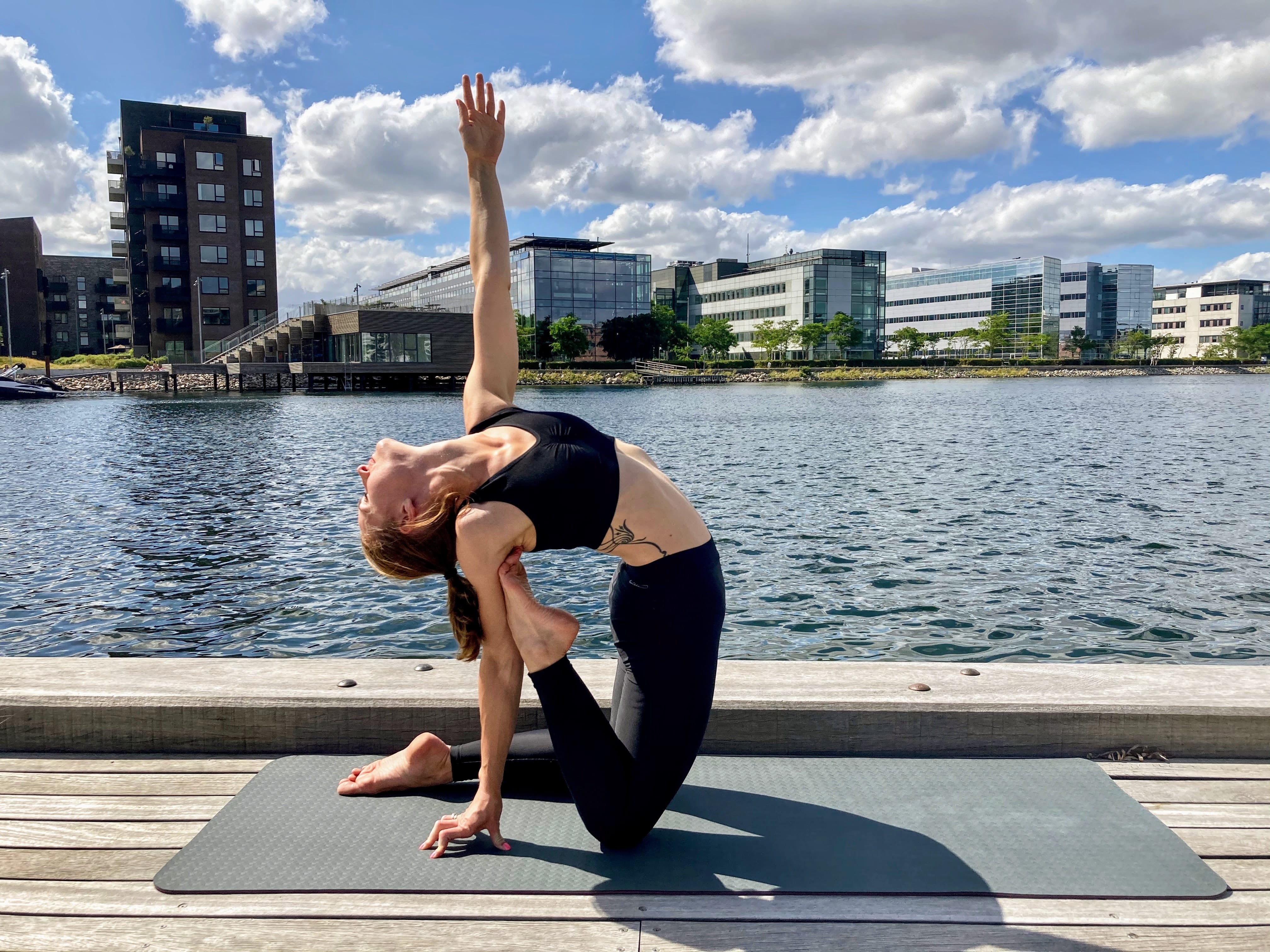
Incorporating a stretching plan into your daily routine may seem like a no-brainer, but it's a bit like eating vegetables: you know you should do it, but sticking with it is another matter. Also, there are a few different aspects to consider before getting started. Performing the wrong type of stretching can not only minimize the effect of the technique, but can also cause injury.
8 common mistakes when stretching
you hold your breath
As with the rest of your training, breathing during the stretch is important. It's not uncommon to inadvertently hold your breath when working on your flexibility, especially if you're new to the stretching process or if you're feeling a little stiff.
Unfortunately, this can cause your body to stay tense and your muscles to contract. This, in turn, hinders the ability to relax the muscle and stretch it properly.
To allow your muscles to relax as you stretch, start by inhaling deeply before starting. Then progressively exhale as you gradually move into the stretch and feel your muscle begin to stretch. Continuing to breathe slowly and deeply as you feel your muscle stretch will prevent the body from tensing up.
Another suggested method is count out loud. This can trick you into breathing, as you'll be forced to breathe in and out as you count each second.
You hold the stretch for too long
Especially if your goal is greater flexibility, you can assume that the longer you hold out, the better the result will be. But this is not the case when it comes to stretching.
To properly stretch a muscle group, experts suggest holding each stretch between 10 and 30 seconds.
This should be done for 60 seconds total (approximately 2-6 repetitions) per muscle. And while they recommend stretching a muscle group at least 2-3 times per week, they also note that stretching daily can provide the most benefit.

you use too much force
Anytime you grab a muscle and lengthen it beyond your normal stopping point (as you do when stretching), it will feel a bit of discomfort. And while it's okay to feel some pain as tension builds, you shouldn't experience sharp pain.
Pushing a stretch too far can cause injury to the muscle or surrounding joint or ligaments. Any stretching that causes anything beyond discomfort should be stopped immediately.
Instead of forcing your stretches beyond what is comfortable, try lowering the intensity. Gently loosen the muscle until you feel a moderate pull. We recommend holding a 3-4 on the intensity scale.
You stretch too much while being hypermobile
The vast majority of people can benefit from adding stretching to their training routine, however this is not true for people with hypermobility, which makes the joints, ligaments and tendons in the body much more flexible than normal.
This greater flexibility puts the individual in a increased risk of injury if you overstretch your already lax muscles. Stretching a hypermobile joint can cause sprains, subluxation (partial dislocation) or the development of osteoarthritis.
Although light stretching of tight areas may be appropriate for people with hypermobility, it is best to focus on a strengthening routine to provide stability to loose joints. Low-intensity aerobic exercises like walking or bicycling can also be helpful in maintaining your overall cardiovascular fitness.
Most importantly, it's crucial for people with hypermobility to consult with their doctor to determine what specific types of exercise are appropriate.

Choosing the wrong type of stretching
There are many types of stretching, but the two most common are static and dynamic. Depending on your goals, one of these stretching options may be more appropriate than the other.
- The stretches static They are performed when a muscle is stretched to the point of mild discomfort and held there for a set period of time.
- The stretches dynamic they involve the constant movement of a muscle back and forth between its stretched and relaxed positions.
Dynamic stretching warms up the muscle better than static stretching. You can also better prepare your body by more closely mimicking the movements you'll be doing during your workout. Static stretching, on the other hand, seems to be more suitable for those looking to improve their overall range of motion.
Those looking to stretch before a workout deben stretch dynamically. To do this, start with your muscle in a comfortable position and slowly stretch it until you feel a low to moderate level pull.
Once you reach this point, gradually return the muscle to its shortened state again. Continue rhythmically alternating between the two positions for 30 to 60 seconds.
Those looking to improve range of motion in a particular joint (such as the shoulders or hips) may best benefit from static stretching.
Doing Static Stretches Before a Plyo Workout
Plyometric (plyo) exercises such as jumping involve a rapid lengthening of a muscle followed by a shortening at high speed. Although stretching before this type of exercise may seem like a good plan, there is some evidence to suggest that stretching a muscle can inhibit your ability to generate energy as it shortens rapidly.
The best way to prepare for a plio workout could be a routine of dynamic stretch instead of statically holding a muscle at the end of its range. This variety of stretching more closely simulates the movements you would do when performing a workout that incorporates quick movements like skipping or skipping.

Stretches to prevent injuries
Contrary to what you may hear, there is mounting evidence that stretching before exercise has less effect on injury prevention than previously thought.
There are minimal evidence that a regular stretching routine effectively prevents muscle injury (such as sprains or strains) or more repetitive type injuries (such as tendinitis). However, it also casts doubt on whether stretching before your workout can improve muscle soreness afterwards.
While there are some emerging questions about the power of stretching to prevent injury before exercising, this doesn't mean you should give it up entirely. On the contrary, the potential benefits of stretching (improved range of motion, better muscle performance) still seem worth the time it takes to incorporate it into your exercise routine.
stretch without warm up
If you plan to do a static stretching session to improve your flexibility, it's important to do a proper warm-up routine before stretching. This is because when you warm up, blood flows to the muscles being used and slightly increases their internal temperature.
In turn, this heating effect makes the muscle more flexible and better prepared to lengthen during a stretch.
A warm up 5 to 10 minutes before to start your stretches. This can include light aerobic activities such as walking, bicycling, or slow jogging.
You can also perform a light dynamic warm-up that reproduces the movements made during your sport or exercise. For example, a baseball player might slowly swing a bat back and forth or complete a few light pitches with a partner before stretching their shoulders.